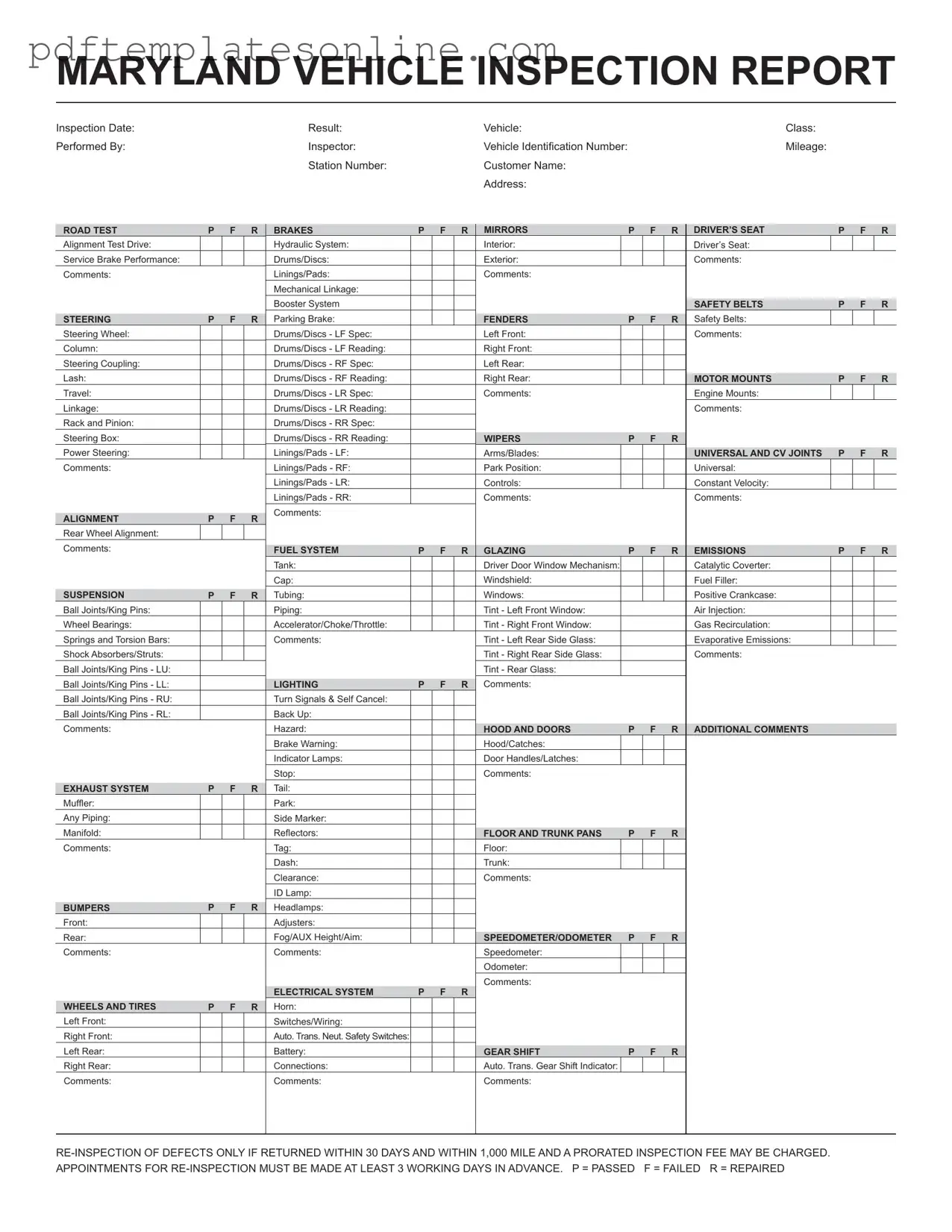When filling out the Maryland Vehicle Inspection Report form, many individuals make common mistakes that can lead to confusion or delays in processing. Understanding these pitfalls can help ensure a smoother inspection experience.
One frequent error occurs in the vehicle identification number (VIN) section. The VIN is a unique identifier for each vehicle, and any mistakes in this number can result in significant issues. Whether it’s a transposed digit or an incorrect character, ensure that the VIN is accurate and matches the vehicle’s documentation.
Another common mistake is failing to provide the correct mileage of the vehicle. This information is crucial for the inspection record. If the mileage is inaccurately reported, it can lead to complications, especially if the vehicle is later sold or if a warranty claim arises. Double-check the odometer reading before entering it on the form.
People often overlook the importance of clearly indicating the inspection results for each section. The form uses a simple system of P (Passed), F (Failed), and R (Repaired), but it’s essential to mark these clearly. Leaving any section blank can lead to misunderstandings about the vehicle's condition.
In the comments sections, individuals sometimes write vague or incomplete notes. Providing detailed comments is vital, especially for areas that have failed inspection or required repairs. This information helps future inspectors understand the vehicle’s history and any issues that were previously addressed.
Another mistake occurs when individuals do not sign or date the form. The signature of the inspector is a critical part of the document, as it verifies that the inspection was completed. Without a signature, the form may be deemed invalid, which could delay the registration process.
People frequently forget to check the safety features of the vehicle, such as safety belts and lighting. These features are essential for ensuring that the vehicle is roadworthy. Neglecting to thoroughly inspect these items can lead to a failed inspection, which could have been easily avoided with a careful review.
In some cases, individuals may not provide sufficient information regarding the customer's address. This detail is important for record-keeping and any future correspondence. Make sure that the address is complete and accurate to avoid any complications later on.
Additionally, some people fail to make appointments for re-inspection within the required timeframe. The form specifies that re-inspection must occur within 30 days and with a prorated inspection fee. Missing this window can lead to the need for a full inspection again, which is often more costly and time-consuming.
Finally, a lack of communication with the inspection station can lead to misunderstandings. If there are questions about the inspection process or specific requirements, it’s essential to ask for clarification. Open dialogue can prevent mistakes and ensure that all necessary information is correctly recorded on the form.
